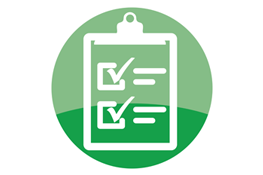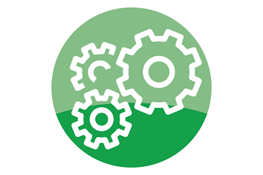Design outputs are the result of each design phase and of the entire design effort. A completed and finished design will culminate in the device itself, its labeling and packaging, and the device master record (DMR).
It can be challenging to decide whether or not an item in the project is a design output or not. There are hundreds or thousands of records created in a project. Which of them are design outputs? Use these criteria to help you decide::
1) Is it a direct result (or work product) of a design input?
2) Does it describe, define, or elaborate on an item of design implementation?
Items that qualify as a design output under one of these tests often fall into two categories: production specifications and descriptive materials. Production specifications are drawings and documents used to procure, fabricate, test, inspect, install, maintain, and service the device. Descriptive materials include items such as risk analysis documents, design drawings, source code, etc.
Design Review
Design review is defined as: “The documented, comprehensive, systematic examination of a design to evaluate the adequacy of the design requirements, to evaluate the capability of the design to meet these requirements, and to identify problems.”
The purpose of design review is to systematically:
• Evaluate progress
• Catch issues
• Confirm that the design process is ready to advance to the next stage
Design reviews evolve in their activities as the design process progresses. Early on, reviews focus on requirements, while later ones focus more on design coverage and manufacturability. Throughout, reviews must assure that risk management (including cybersecurity risk management) is present in the design activity being reviewed.
The number and timing of formal design reviews for a given project are determined during the design planning stage. It is essential to conduct early design reviews because it is much easier to solve design problems when the design is still merely a CAD drawing (for example), versus later, when it is already being prototyped or in early-stage production.
As part of design planning, be sure and allocate time and resources for dealing with the review findings. It is better to plan time to fix problems that will inevitably be uncovered in the review process and then be surprised if there are none than to prepare as if you’ll find no issues and then have to scramble behind schedule to fix them.
So who is going to review the design? Depending on the type and stage of review, they could be internal personnel solely or could also include select external staff. In either case, reviewers must be qualified and independent.
- Qualified: Reviewers must be technically or experientially qualified. Technical qualifications must be relevant to the design aspect being reviewed, for an electronics engineer reviewing traces on a circuit board for proper shielding and noise immunity. Make sure that the technical reviewers have at least the same level of qualification as the designers creating the material to be reviewed. Experiential reviewers might be a medical professional who routinely uses devices similar to the one you are designing.
- Independent: While it is acceptable for design reviewers to work for the same entity that produces the design, at least one of the reviewers must not be involved in the creation of the design material being reviewed.
There are three steps to any design review:
1) Evaluate the design
2) Resolve concerns
3) Implement corrective action
Quality design reviews involve the cultural leadership of the process. Make sure that all involved in the analysis are working together for the common good of great design — lean hard against the tendency of reviewers to be competing against reviewers. Design review is a useful and necessary part of design and should be seen as a collaborative effort by all.
Once issues are uncovered, the review team should address how the problems will be resolved. There are countless ways to approach this, but make sure that your method for addressing concerns as they arise is (1) documented, and (2) followed. An output from the design review is a list of corrective actions that are entered in the formal design change process.
Remember that design reviews happen over and over throughout the design process, according to the design plan. Early-stage reviews will be focused on requirements, while later-stage reviews will be focused on outputs of verification or validation efforts.
In our next post, we will discuss the importance of Verification & Validation when it comes to the Design Controls process.










